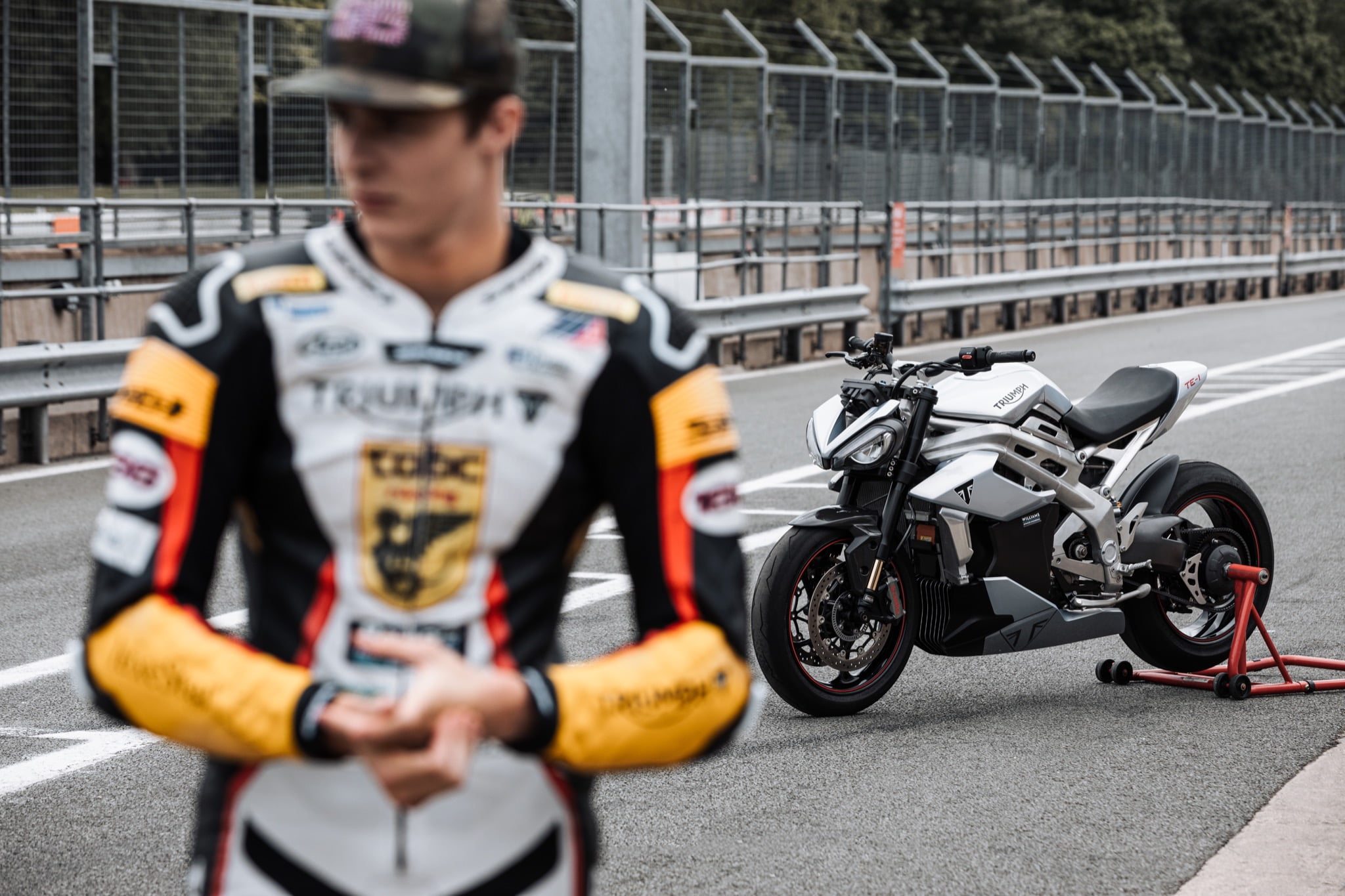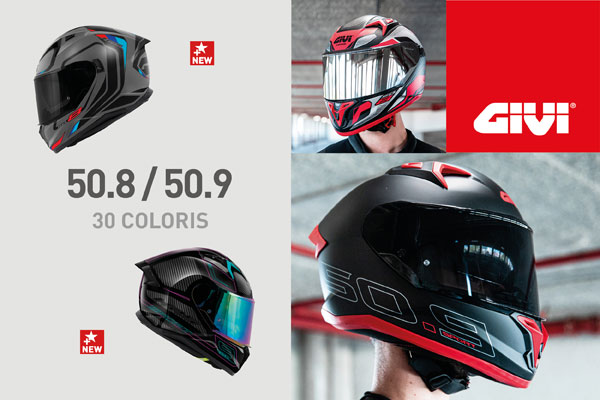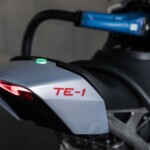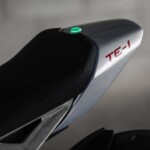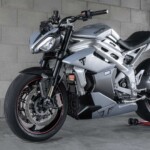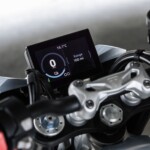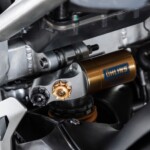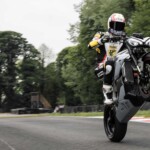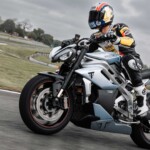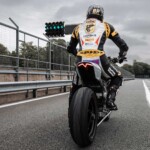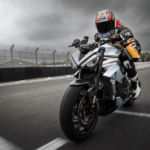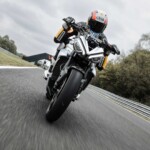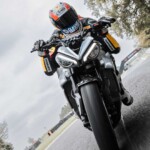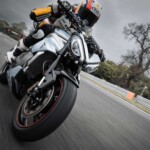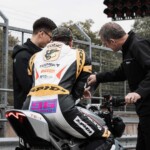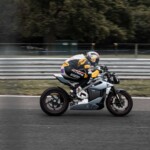The test results of the final prototype of the first electric Triumph exceed the initial objectives: 20 minutes to recharge up to 80%, 161 km of autonomy, 177 horsepower, 220 kg. Size and ergonomics of the Street Triple like the Speed Triple. There is reason to wait for the release of the future production model with a certain frenzy!
The TE-1 project was born from Triumph's collaboration with other partners specializing in electrification: major names such as Williams Advanced Engineering who supplied an ultra-light battery and its control system, Integral Powertrain whose department e-Drive oversaw the development of a high energy density silicon carbide inverter powertrain, the Warwick Manufacturing Group at the University of Warwick offered its expertise to translate the innovations developed into marketable products through modeling and simulation based on future market needs. On the more institutional side, there was support from the UK government's Office for Zero Emission Vehicles (OZEV) at the University of Warwick – whose work is to support the transition to zero-emission vehicles and fund expansion charging stations in the UK economic growth – and Innovate UK, the government research and innovation agency which funds development activities and economic growth in the UK.
The project leading to the TE-1 aimed to develop an electric motorcycle capable of providing a clearer direction for the future development of Triumph production, driving innovation and increasing credibility in British industry and design. More specifically, it has been organized in four main phases with the main objective of achieving perfect integration between all components developed independently and optimized to integrate them in the best possible way with the aim of creating an electric motorcycle with reduced weight and as little complexity as possible, with an overview of all the innovations and developments obtained which will also be useful for Triumph's future strategy in the field of electric vehicles and which in the case of the TE-1 had as its objective the possibility of creating a unique project capable of integrating design with technology in the best possible way.
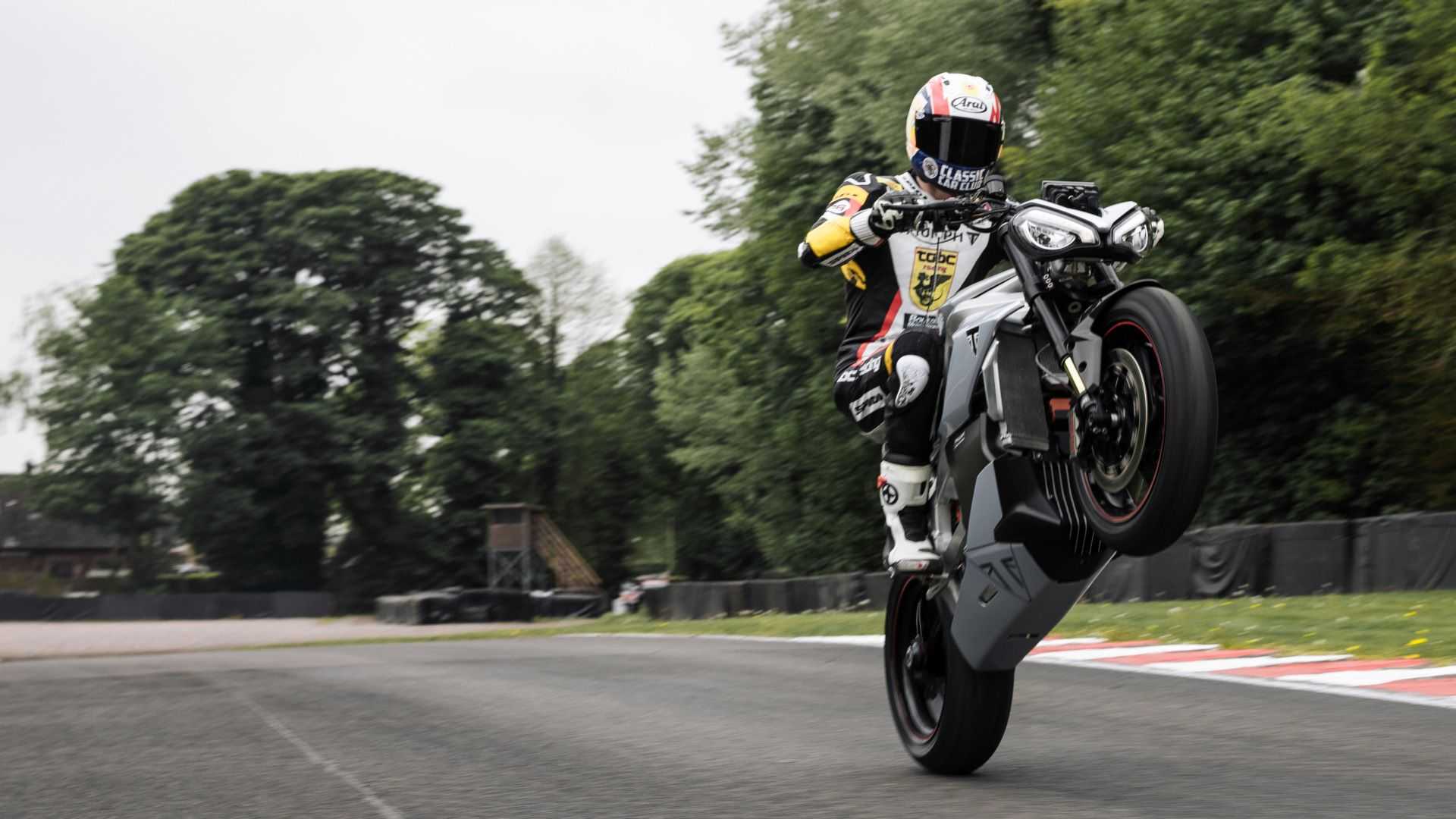
The fourth phase of the project has just been completed and the prototype was able to show its qualities and the results obtained exceeded the objectives that were set for us when defining the project.
An electric motorcycle with technical characteristics that would make a thermal engine pale
A 177 horsepower and 220 kg motorcycle, which goes from 0 to 100 km/h in 3,7 seconds and from 0 to 160 km/h in 6,2 seconds, these are technical characteristics similar to those of the current Speed Triple 1200. But in this article we are not talking about the replacement for the Speed Triple, because these data belong to an electric motorcycle not far from seeing its characteristics transfigured into a future production model: the Triumph TE-1, the first electric motorcycle developed by Triumph in its 120-year history, an electric mobility project whose completion Triumph announces with the publication of the test results of the final demonstration prototype, results which exceed the initial objectives.
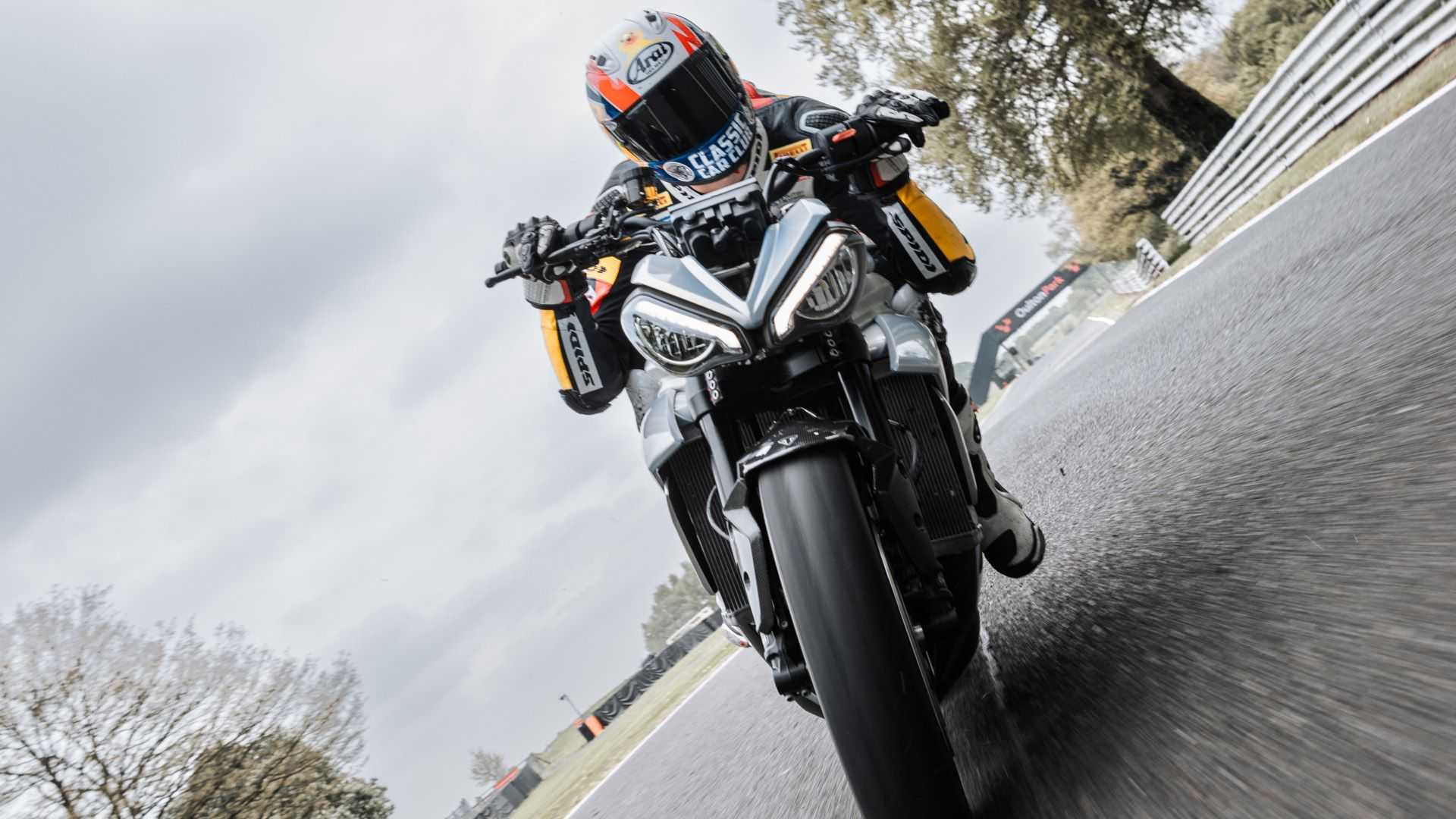
The Triumph TE-1 is capable of developing a peak power of 130 kW (177 hp) and a torque of 109 Nm delivered instantly, normal for an electric motor. The final drive is via a toothed rubber belt, which can last at least 96 km.
Thanks to the battery energy density developed and designed by Williams, the TE-1 is capable of traveling 161 miles on a single charge based on testing conducted under conditions comparable to real-world use. Regenerative braking also contributes to this result, opening up new developments and refinements to the future Triumph electric motorcycle range.
The declared recharge time to reach 80% of the battery charge is 20 minutes: these results have been achieved also thanks to the collaboration with Williams Advanced Engineering, thus managing to achieve the ambitious targets set by Innovate UK (the agency government for research and innovation).
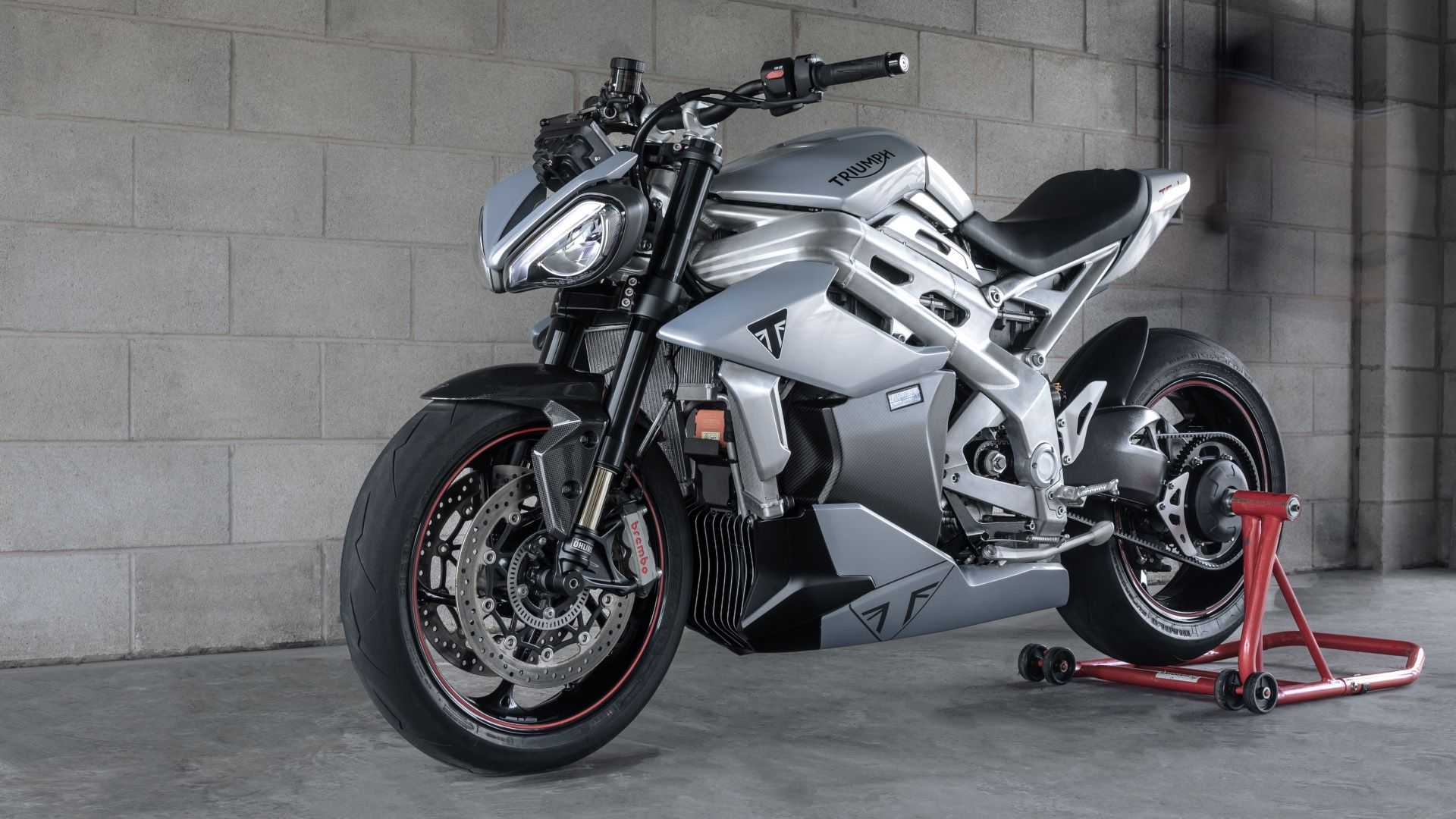
By its design, the TE-1 appears as immediately recognizable as a Triumph: the visible aluminum for the frame which takes the shapes of the well-known roadsters and the double headlight which distinguishes the Speed and Street Triple are just a few -one of the elements that place the TE-1 very close in design to the endothermic Triumphs, with similar overall dimensions. Add to this the Öhlins suspension and the single swingarm, borrowed from the Speed Triple RS and RR which improve the dynamic driving quality and, in addition, on both sides of the fairing the radiators stand out which seem to provide cooling for the battery . Obviously, the clutch lever and gear selector are missing, compared to the thermal models.
Sound being an aspect on which Triumph has always been demanding, the TE-1 is no exception to the rule and the manufacturer has focused its attention so that the roadster delivers a fairly recognizable turbine noise.
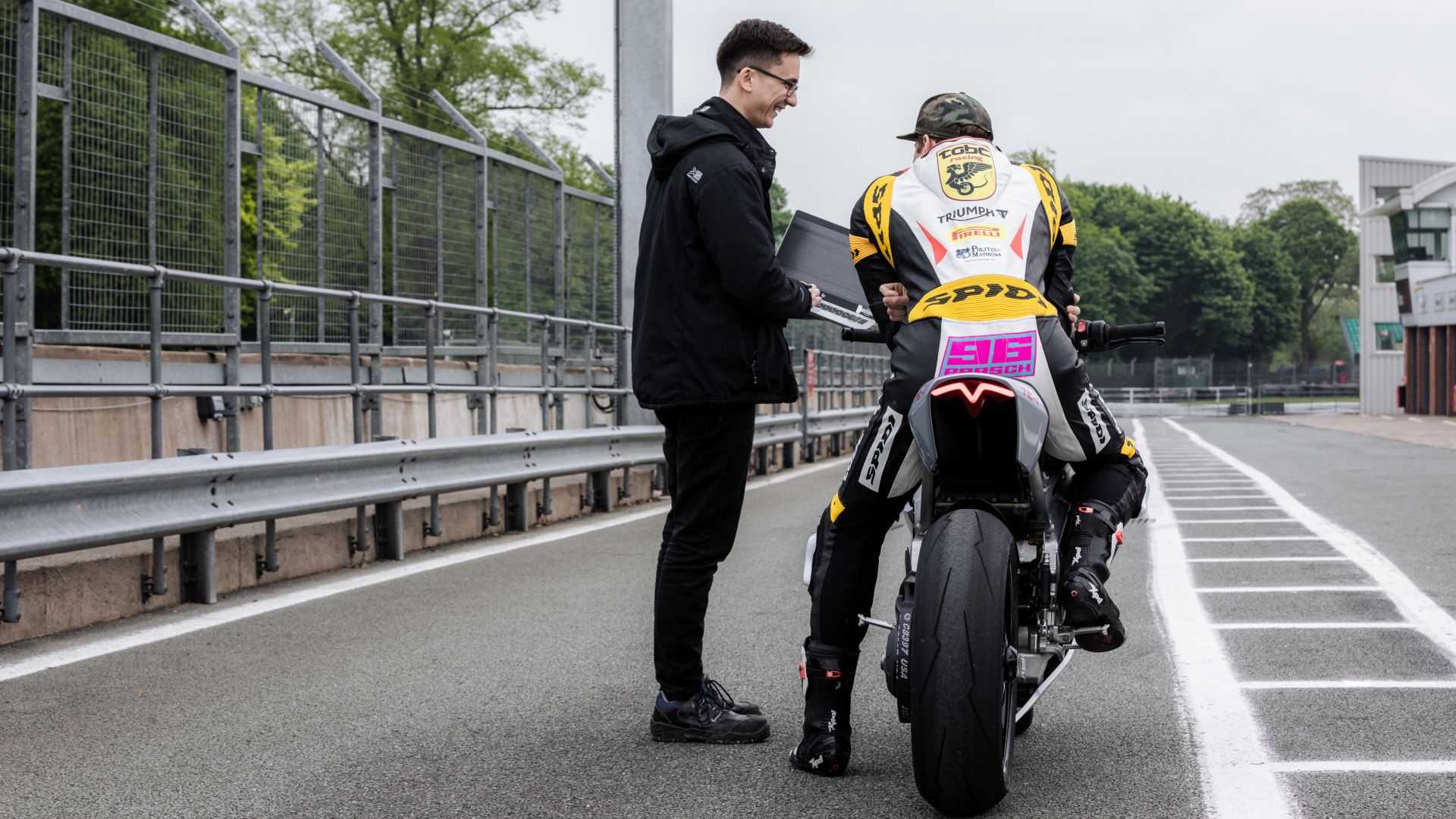
During the final test phase of the TE-1, Triumph called on Brandon Paasch, a young twenty-year-old American rider who recently won – for the second time in a row – the Daytona 200 on a Triumph 675. He took part in the phase final test, both in the evaluation of the performance of the electrical component and in the final development of the prototype through numerous tests carried out on the track, which he summarized as follows: “The throttle response on the TE-1 is incredible, when you touch the grip the power is delivered instantly, which is obviously what I love as a biker. I love the couple's performance. I had the opportunity to test the prototype on the road in different situations, and it is incredibly fast,” adding a consideration also regarding handling and overall performance: “I would have loved to have this prototype at Daytona, with this acceleration and this incredible chassis! I think it will be a really fun bike to ride on the road, thanks to its agility. »
Now that testing of the TE-1 prototype is complete, we will have to wait and see when a production version appears and what changes can be made. The styling of the prototype was extremely well received, and it's not expected to change much. Then again, Triumph's styling touch is remarkably consistent, so we'd be surprised if they refrain from giving the public what they want in this area.










